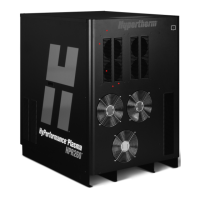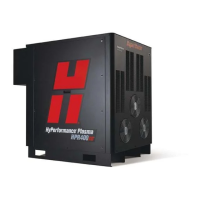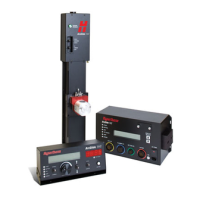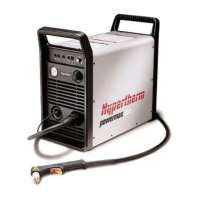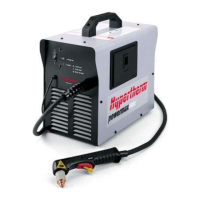Safety and Compliance SC-7
Safety
NOISE CAN DAMAGE HEARING
Cutting with a plasma arc can exceed acceptable noise levels as
defined by local regulations in many applications. Prolonged exposure
to excessive noise can damage hearing. Always wear proper ear
protection when cutting or gouging, unless sound pressure level
measurements taken at the site have verified personal hearing
protection is not necessary per relevant international, regional,
andlocal regulations.
Significant noise reduction can be obtained by adding simple
engineering controls to cutting tables such as barriers or curtains
positioned between the plasma arc and the workstation, and/
or locating the workstation away from the plasma arc. Implement
administrative controls in the workplace to restrict access and limit
operator exposure time, and screen off noisy areas and/or take
measures to reduce reverberation in cutting areas by putting up
noiseabsorbers.
Use ear protectors if the noise is disruptive or if there is a risk
of hearing damage after all other engineering and administrative
controls have been implemented. If hearing protection is required,
wear only approved personal protective equipment such as ear
muffs or ear plugs with a noise reduction rating appropriate for the
situation. Warnothers near the cutting area of possible noise hazards.
Inaddition, ear protection can prevent hot splatter from entering
theear.
DRY DUST COLLECTION INFORMATION
In some workplaces, dry dust can represent a potential explosion
hazard.
The U.S. National Fire Protection Association’s NFPA standard 68,
“Explosion Protection by Deflagration Venting,” provides requirements
for the design, location, installation, maintenance, and use of devices
and systems to vent combustion gases and pressures after any
deflagration event. Consult with the manufacturer or installer of any dry
dust collection system for applicable requirements before you install
a new dry dust collection system or make significant changes in the
process or materials used with an existing dry dust collection system.
Consult your local “Authority Having Jurisdiction” (AHJ) to determine
whether any edition of NFPA standard 68 has been “adopted by
reference” in your local building codes.
Refer to NFPA standard 68 for definitions and explanations of
regulatory terms such as deflagration, AHJ, adopted by reference,
theKst value, deflagration index, and other terms.
Note 1 – Unless a site-specific evaluation has been completed that
determines that none of the dust generated is combustible, then
NFPA standard 68 requires the use of explosion vents. Design the
explosion vent size and type to conform to the worst-case Kst value
as described in Annex F of NFPA standard 68. NFPA standard 68
does not specifically identify plasma cutting or other thermal cutting
processes as requiring deflagration venting systems, but it does apply
these new requirements to all dry dust collection systems.
Note 2 – Users should consult and comply with all applicable national,
state, and local regulations. Publications do not intend to urge action
that is not in compliance with all applicable regulations and standards,
and this manual may never be construed as doing so.

